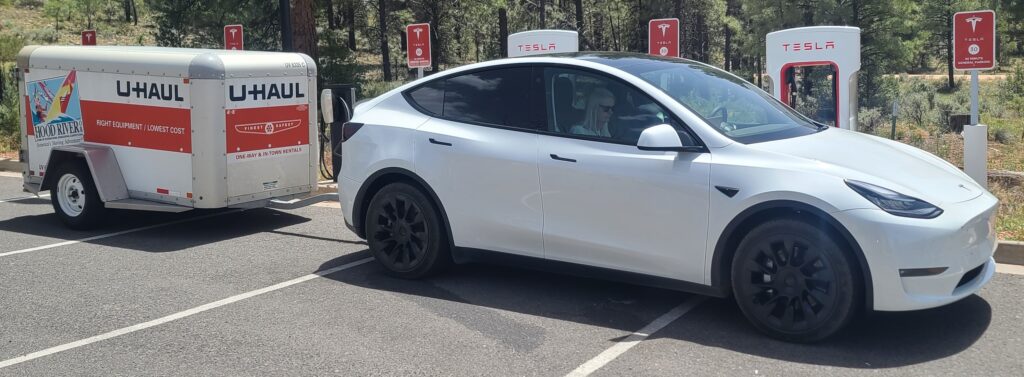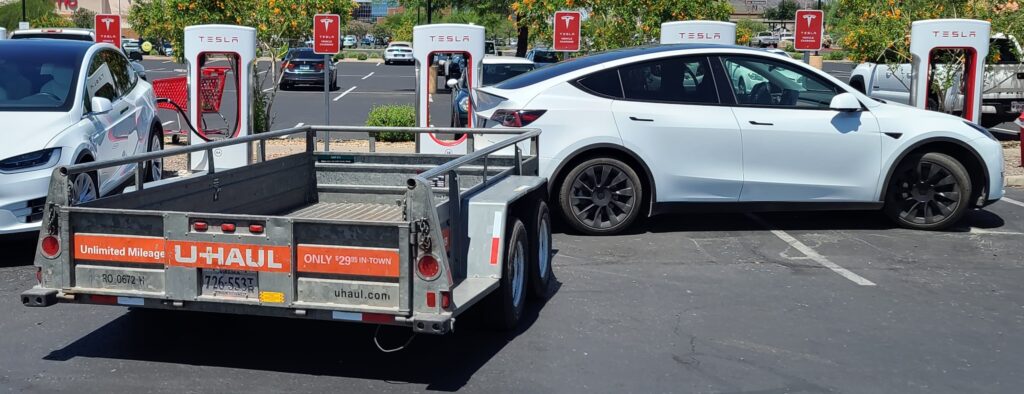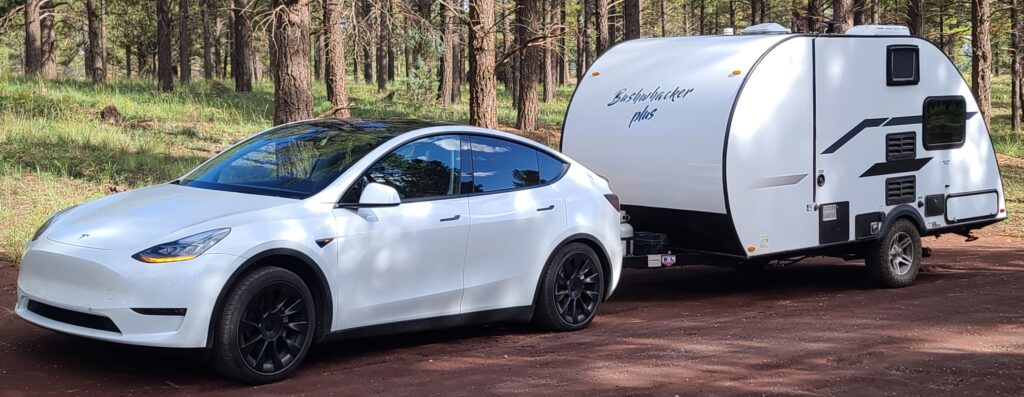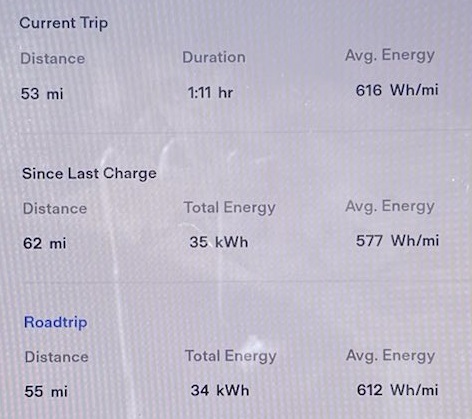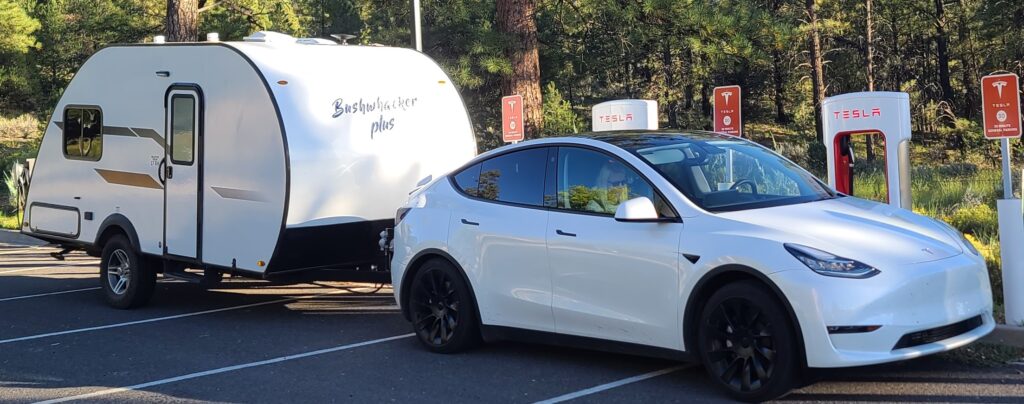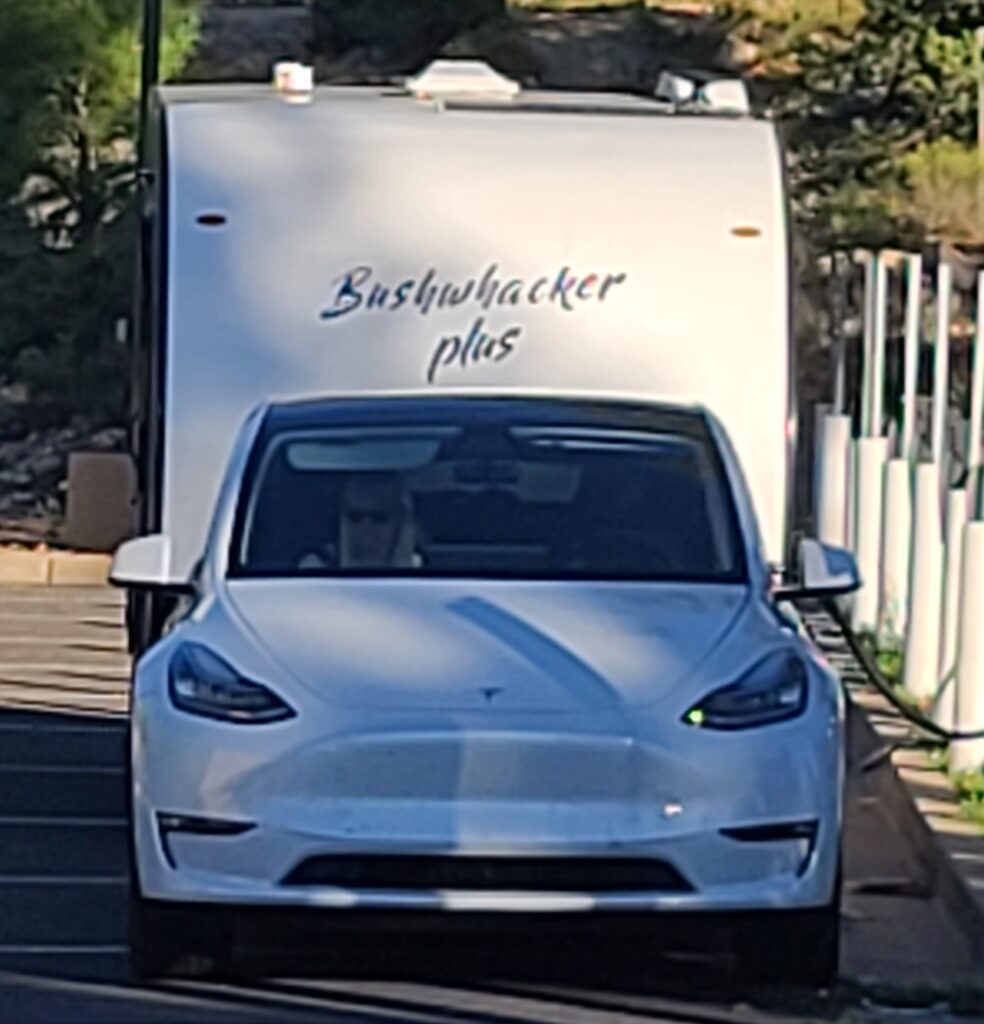We have been through a few towing tasks with the Tesla Model Y Long Range. Our first trip was to pick up the solar components. This was Flagstaff - Tusayan - Kingman - Williams - Flagstaff with the smallest U-Haul box trailer that had a floor area of 8x4 feet. The trailer was heavy with 800 pounds loaded from Kingman to Williams.
Total distance was 354 miles with an average 443 Watthour/Mile. The average driving the Tesla with no trailer is 290 Watthour/Mile. So, the additional consumption was 58% or a reduction in our range from ~250 miles to 150 miles when staying around 65 Miles per Hour.
We drove to Tusayan as a test. A short distance to test if the long stretch to Kingman and back was possible.
We had to charge to 100% in Kingman to make it up to Williams and then on to Flagstaff.
We returned the trailer after using 157 kWh or around $75 of electricity.
Our second trip for parts was Flagstaff - Phoenix - Williams - Flagstaff to pick up 600 pounds of aluminum for the roof structure and wall support. This was a 12-foot long dual axle utility trailer that was a lot wider than the Tesla.
We drove 376 miles with an average consumption of 517 Watthour/Mile. Compared to our standard 280 Watthour/Mile that is an 84% increase in consumption or a drop in range from 240 miles to 130 miles. We couldn't pass a single Supercharger on the way up the hill from Phoenix to Flagstaff without stopping for an 80% charge. We followed the traffic and stayed around 65 Miles per Hour.
Charging at a shopping mall in the Phoenix area. Blocking three stalls and half the driveway.
Charging at New River blocking many stalls since it was mostly empty.
Total consumption was 194 kWh or under $100 in electricity.
The last trip, that we are still on, is with a large tear drop camper. We rented the trailer in Flagstaff and drove to Tusayan close to Grand Canyon. This trailer adds a significant frontal area to pull through the wind.
When driving around 65 Miles per Hour this trailer is reducing our range with more than 2.5 times or to under 100 miles.
We first drove in the town of Flagstaff and on the smaller highway 180 leading to Grand Canyon Junction for this section it was possible to keep the speed to 55 Miles per Hour as a test. For this section we still averaged more than twice the consumption.
We charged at the Tusayan Supercharger as soon as we arrived with 18% State of Charge.
The frontal area of the Tesla is very small compared to the trailer cross section and the trailer is for sure not as slippery or low drag as the Tesla.
After speeding up to 65 Miles per hour for the last 20 miles the consumption was even higher. We also had some head wind that made it even worse. We used 18 kWh in 20 Miles for an average of 900 Watthour/Mile. This is more than 3 times our regular consumption or a range of 80 miles.
At no time under these towing trips were we lagging power or seeing any reduction in power from the Tesla, but the loss of range makes towing a large tear drop trailer impossible for longer distances. The smaller U-Haul box trailer was OK and could be done for a very long distance without problems even for a cross country trip. But with the reduction from the tear drop trailer the speed would be dangerously low or the Superchargers too far apart for a cross country trip.
